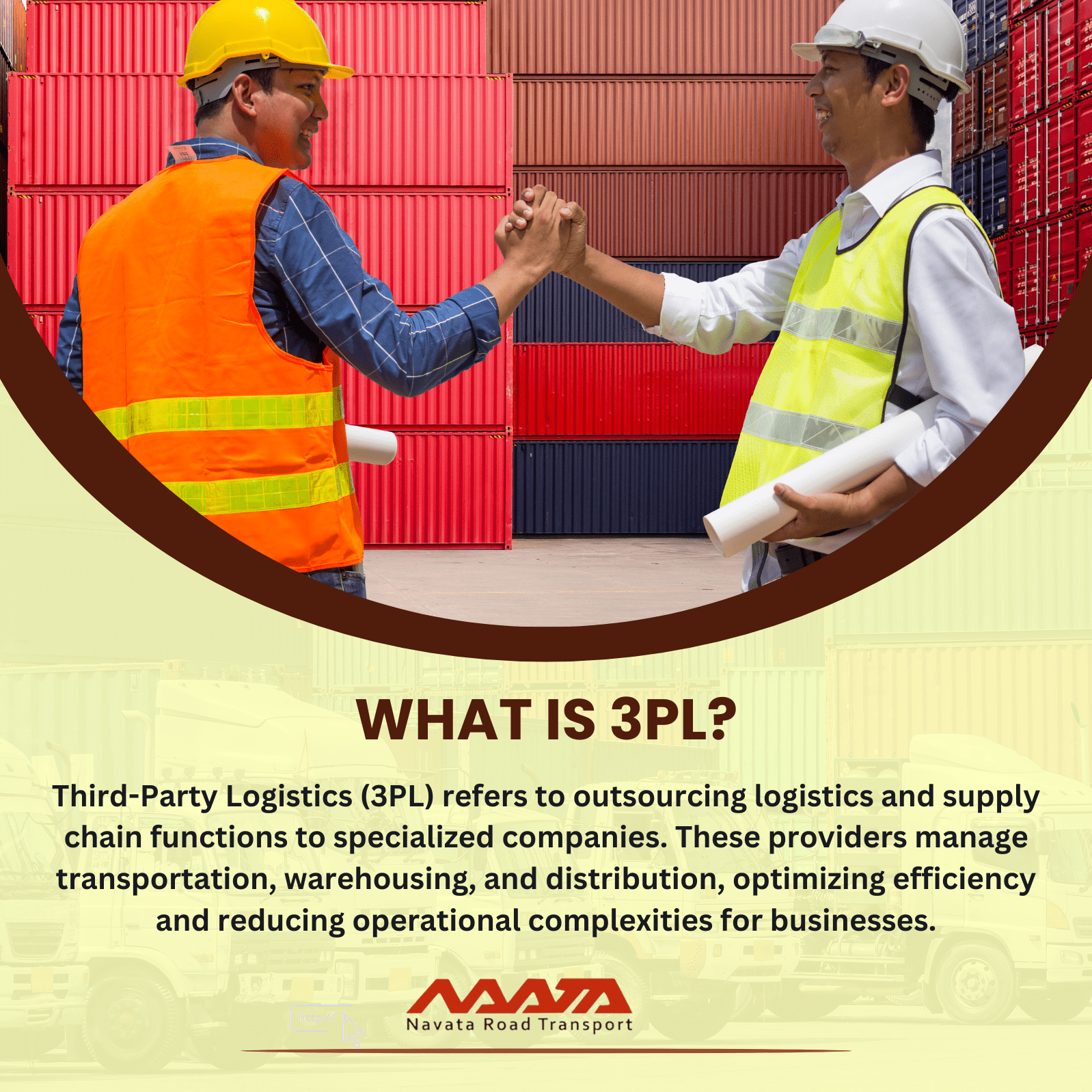Third-Party Logistics – 3PL Comprehensive Guide
Table of Contents
Third-Party Logistics (3PL) - Definition & Importance
Definition of 3PL
Third-party logistics (3PL) refers to the practice of outsourcing logistics functions and activities to a third-party provider that specializes in supply chain management. 3PL companies provide a range of services, including warehousing, transportation, order fulfillment, inventory management, and customer service.
These functions can span the spectrum from transportation and warehousing to distribution and fulfillment. Essentially, 3PL involves outsourcing specific elements of logistics operations to specialized entities, allowing businesses to focus on their core competencies.
Importance of 3PL
Strategic Role: In the contemporary business landscape, 3PL plays a strategic role in optimizing supply chain processes. By leveraging the expertise of specialized providers, businesses can streamline operations and enhance overall efficiency.
Globalization Impact: The increasing globalization of trade has amplified the importance of 3PL. As supply chains become more intricate and extend across borders, businesses turn to 3PL providers to navigate the complexities associated with international logistics.
Efficiency and Cost Savings: One of the fundamental reasons for the growing importance of 3PL is the potential for efficiency gains and cost savings. Businesses can benefit from the economies of scale, specialized knowledge, and advanced technologies that 3PL providers bring to the table.

Key Functions of 3PL Providers
Transportation
Overview: Transportation is a core function of 3PL providers, encompassing the movement of goods from one point to another. This involves strategic planning, carrier selection, route optimization, and real-time tracking.
Specific Tasks
Mode Selection: Choosing the most appropriate transportation mode (road, rail, air, sea) based on the nature of the goods, distance, and urgency.
Carrier Management: Negotiating contracts with carriers, managing relationships, and ensuring compliance with transportation regulations.
Route Optimization: Utilizing technology to optimize delivery routes, minimizing costs and transit times.
Tracking and Visibility: Implementing systems for real-time tracking of shipments, providing clients with visibility into their supply chain.
Warehousing
Overview: Warehousing is about the efficient storage and management of goods. 3PL providers operate warehouses that serve as hubs for inventory storage, order processing, and distribution.
Specific Tasks
Inventory Management: Tracking and managing inventory levels to prevent stockouts or overstock situations.
Order Fulfillment: Picking, packing, and shipping orders accurately and promptly.
Storage Solutions: Implementing effective storage solutions based on the characteristics of the products (e.g., temperature-controlled storage for perishables).
Cross-Docking: Streamlining the movement of goods from inbound to outbound without long-term storage, reducing handling costs.
Distribution
Overview: Distribution involves the efficient movement of goods from the manufacturer or distributor to the end consumer. 3PL providers play a vital role in optimizing this process.
Specific Tasks
Network Design: Designing an optimized distribution network to ensure timely and cost-effective deliveries.
Last-Mile Delivery: Managing the final leg of the delivery process, ensuring products reach end customers promptly and in good condition.
Order Consolidation: Combining multiple orders into one shipment to minimize shipping costs.
Reverse Logistics: Handling returns and managing the reverse flow of goods from consumers back to warehouses.

5 Advantages of 3PL
There are multiple advantages to working with a Third-Party Logistics provider. All the segments of operational logistics regarding the movement of freight, from warehouse to delivery, are tedious and require keen monitoring. Some of these important benefits and advantages of 3PL are as follows –
Risk Management
Unprecedented and unexpected delays in the shipping industry are an unavoidable factor that negatively impacts the operational logistics and customer experience. The reasons may be many but the impact is singular, a blow to the brand image. Here a 3PL service comes to rescue. When unforeseen circumstances pop up, a Third-Party Logistics service provider is responsible for making alternate arrangements to fulfill the shipping orders as quickly as possible, within the scheduled time format. Also, a 3PL service provider is committed to protecting in the event of damage or loss of goods.
Scalability and Flexibility
One of the primary advantages of 3PL is the inherent scalability and flexibility it offers to businesses. As companies experience fluctuations in demand or seasonal variations, 3PL providers can dynamically adjust their resources to accommodate these changes. This adaptability ensures that businesses can scale their logistics operations up or down without the need for significant internal adjustments.
Whether it’s handling sudden spikes in orders during peak seasons or optimizing resources during periods of lower demand, 3PL providers offer a responsive and scalable solution. This flexibility enables businesses to focus on their core competencies while leaving the intricacies of the logistics to experts who can adjust to evolving needs.
Save Money
3PLs are a specialized set of service providers and as such they have their own established network. This naturally allows Third-Party Logistics to have much greater leverage with freight companies than individual shippers have. Since 3PL providers work with carriers on behalf of multiple customers, it enables them to successfully negotiate pricing, based on a much higher volume and order frequency. This helps in reducing the cost of freight movement logistics dramatically.
Warehouse Management
Effective warehouse management is a critical aspect of any supply chain, and 3PL providers excel in optimizing this component. These providers invest in advanced warehouse technologies, such as inventory management systems, automated picking and packing, and real-time tracking.
By leveraging these technologies, 3PLs enhance the accuracy and efficiency of inventory management. They ensure that products are stored, picked, and shipped with precision, reducing the risk of errors and minimizing the chances of stockouts or overstock situations. Additionally, the expertise of 3PL providers in warehouse management contributes to streamlined operations, ultimately resulting in cost savings for businesses through improved space utilization and inventory turnover.
Speedy Delivery
Speedy and reliable delivery is a key factor in meeting customer expectations, especially in the age of e-commerce. 3PL providers play a pivotal role in ensuring the swift movement of goods from warehouses to end consumers. With strategically located distribution centers and an optimized network design, 3PLs can significantly reduce transit times. Moreover, they employ advanced route optimization technologies, real-time tracking systems, and efficient last-mile delivery strategies. This commitment to speedy delivery not only enhances customer satisfaction but also contributes to a competitive edge in the market and proven to be one of the most important advantage of 3PL.
You Might Also Like To Read: Why should you outsource your logistics functions?
Some Minor Challenges of 3PL
There are two sides to every coin. The other side of the story is that Third-Party Logistics is not cut out for every business profile. Here are a few challenges that need to be considered when working with a 3PL provider and their impact on business.
Lowered Control Over the Delivery Process
Since a 3PL provider manages all the delivery logistics, the primary control of delivery is in the hands of the 3PL provider. This naturally lowers the brand’s control over merchandise and shipping logistics. This creates a challenging situation in case of shipping delay. In the event of a delayed delivery, the customer will look at the Business Brand for the resolution of the problem, not at the 3PL provider. And this gets tricky because the 3PL provider has the primary control of the shipping logistics.
Large Initial Upfront Investment
In the long run, 3PL service is cost-effective and pays for itself. However, the initial investment can still be huge and be a heavy investment for the business in the beginning stages. If the merchandise sale + order + shipment volume is not huge, and a big warehouse is not needed, the cost of hiring a Third-Party Logistics provider becomes prohibitive.
Increased Physical Distance between the Business and its Product
The 3PL provider may have a warehouse at a considerable physical distance from the company offices. This positions the business far away from its products. As a result, it creates an inconvenience for the brand to handle quality control issues, or in case there is a need to inspect the stock for any reason physically.
Conclusion
In the age of specialization, businesses are increasingly recognizing the value of outsourcing non-core functions to specialized providers. The advantages of cost savings, expertise access, and scalability offered by 3PL providers enable companies to focus on their core competencies and strategic initiatives.
As we conclude this exploration, it becomes evident that the success of any 3PL implementation lies not just in the capabilities of the provider but also in the synergy and collaboration between the outsourcing organization and the 3PL partner.
Whether you’re a business exploring 3PL options or a logistics professional navigating the evolving landscape, staying informed and adapting to industry trends will be paramount. Reach out to potential 3PL partners armed with the knowledge gained from this guide, and consider the unique needs and challenges of your industry.
In the end, the world of 3PL is not just about logistics; it’s about creating efficient, responsive, and sustainable supply chains that propel businesses into the future.
Thank you for joining us on this journey into the heart of 3PL. Here’s to the continued evolution and success of logistics and supply chain management in our interconnected world.
Thanks For Reading: Third-Party Logistics – 3PL Comprehensive Guide









